Anemia & Kidney Health Risk Calculator
Interpretation Guide
This calculator estimates your risk level based on hemoglobin, CKD stage, and nutritional status. Higher risk indicates greater potential for complications such as accelerated kidney decline or increased dialysis needs.
- Low Risk: Hemoglobin ≥ 12 g/dL, Stage 1-2 CKD, Good nutrition
- Moderate Risk: Hemoglobin 10-11.9 g/dL, Stage 3 CKD, Fair nutrition
- High Risk: Hemoglobin < 10 g/dL, Stage 4-5 CKD, Poor nutrition
Ever wonder why a simple iron‑rich meal can sometimes feel like a lifeline for your kidneys? The connection between blood health and renal function runs deeper than most people realize. Below we unravel how anemia and specific nutrient gaps sabotage the kidneys, and what you can do to protect both.
Quick Takeaways
- Anemia is a drop in hemoglobin that limits oxygen delivery to every organ, including the kidneys.
- Iron, vitamin B12, and folate are the three nutrients most often missing in kidney‑related anemia.
- The kidneys produce erythropoietin (a hormone that tells bone marrow to make red blood cells), so kidney damage reduces this signal and worsens anemia.
- Correcting deficiencies can improve hemoglobin, lower dialysis needs, and slow chronic kidney disease (CKD) progression.
- Regular labs, a balanced diet, and timely supplementation are the cheapest, most effective defense.
What Is Anemia?
Anemia is a condition characterized by low hemoglobin levels, resulting in reduced oxygen transport in the blood. When the blood can’t carry enough oxygen, every tissue feels the strain-muscles get tired, the brain fogs, and the heart works harder. In the context of kidney health, the problem magnifies because the kidneys rely on a steady oxygen supply to filter waste and regulate fluid balance.
Typical laboratory thresholds (for adults) are hemoglobin < 13g/dL for men and < 12g/dL for women. Below these numbers, clinicians start looking for the root cause, which often splits into two camps: blood loss (e.g., gastrointestinal bleeding) and inadequate production of red cells, the latter being the focus here.
How Kidneys Keep Blood Healthy
Kidney a bean‑shaped organ that filters blood, balances electrolytes, and produces hormones does more than just clear toxins. One of its key endocrine functions is making erythropoietin (a glycoprotein hormone that stimulates the bone marrow to produce red blood cells). When oxygen levels dip, the kidneys sense this change and release more erythropoietin, prompting the body to boost red‑cell production.
Damage to the nephrons-whether from diabetes, hypertension, or auto‑immune attacks-impairs this feedback loop. The result is "renal anemia," a hallmark of advanced CKD. Even mild kidney injury can blunt erythropoietin output, setting off a vicious cycle of low oxygen and worsening filtration.
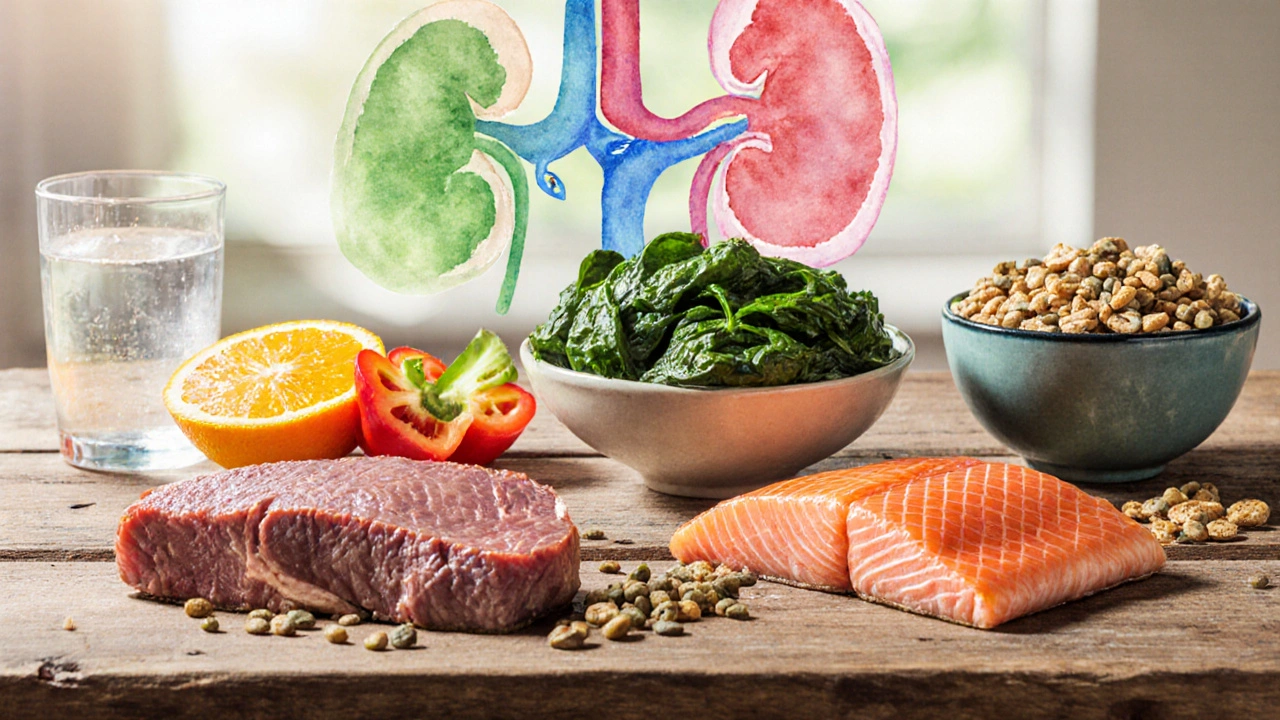
Key Nutritional Deficiencies Behind Anemia
Three nutrients dominate the anemia picture, especially when kidneys are involved:
- Iron deficiency the most common cause of anemia worldwide, arising from poor intake, absorption issues, or chronic blood loss. Iron is the core component of hemoglobin; without it, red cells can’t bind oxygen.
- Vitamin B12 deficiency often due to malabsorption, low dietary intake (especially in vegans), or medication interference. B12 is essential for DNA synthesis in bone‑marrow cells; its lack leads to "megaloblastic" anemia.
- Folate (vitaminB9) deficiency caused by inadequate diet, alcohol use, or dialysis‑related losses. Like B12, folate is crucial for cell division and red‑cell maturation.
Other contributors-like copper, zinc, or vitaminC-play supporting roles, but iron, B12, and folate are the heavy hitters. In CKD patients, dialysis can strip folate and B12, while the chronic inflammation often hijacks iron stores, making them inaccessible.
How These Deficiencies Hurt Renal Function
When anemia takes hold, the kidneys face two simultaneous assaults:
- Oxygen deprivation. Nephrons need about 10% of the body’s oxygen to maintain filtration pressure. Low hemoglobin reduces arterial oxygen content, leading to hypoxic injury that accelerates scarring (fibrosis).
- Increased workload. The heart compensates for low oxygen by pumping faster and higher pressures, raising systemic blood pressure. Elevated glomerular pressure forces the kidneys to work harder, speeding up decline.
Studies from the National Kidney Foundation (2023) show that patients with hemoglobin < 11g/dL had a 30% faster decline in estimated glomerular filtration rate (eGFR) compared with those maintaining >12g/dL, even after adjusting for diabetes and hypertension.
Moreover, iron deficiency itself can blunt erythropoietin response. The hormone may be present, but without iron, the bone marrow can’t translate the signal into new red cells. This functional iron deficiency creates a therapeutic dead‑end for standard CKD anemia treatments.
Dietary Strategies to Fill the Gaps
Targeted nutrition can lift hemoglobin and ease kidney strain. Below is a practical guide broken down by nutrient.
| Food | Iron (mg per 100g) | VitaminB12 (µg per 100g) | Folate (µg per 100g) |
|---|---|---|---|
| Beef liver | 6.2 | 70 | 290 |
| Spinach (cooked) | 3.6 | 0 | 194 |
| Fortified breakfast cereal | 4.5 | 5.5 | 150 |
| Salmon | 0.8 | 4.9 | 25 |
| Lentils (cooked) | 3.3 | 0 | 181 |
Tips for maximizing absorption:
- Pair iron‑rich foods with vitaminC sources (citrus, bell peppers) to boost non‑heme iron uptake.
- Avoid coffee or tea within an hour of iron meals; tannins inhibit absorption.
- For B12, animal proteins are the most reliable source. Vegans should consider fortified foods or a sublingual supplement of at least 25µg daily.
- Since dialysis can leach folate, patients often need a 400‑800µg supplement after each session.
Remember that kidney patients must watch potassium and phosphorus. Favor low‑potassium iron foods like lean beef over spinach if potassium is a concern, and talk to a dietitian about portion sizes.
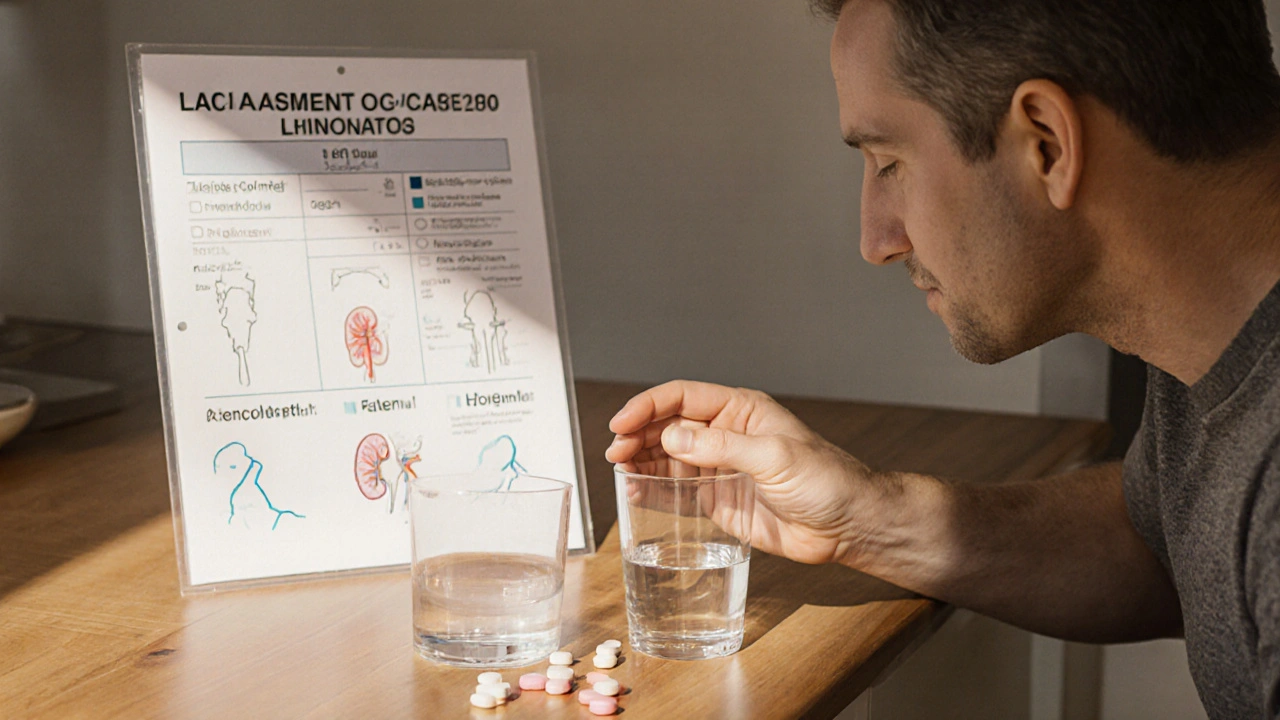
Supplementation: When Food Isn’t Enough
Lab‑guided supplementation is the gold standard. Typical regimens (adjusted for CKD stage) include:
- Oral ferrous sulfate - 325mg (≈65mg elemental iron) two to three times daily, taken with vitaminC and on an empty stomach if tolerated.
- Intravenous iron - ferric carboxymaltose or iron sucrose for patients with poor oral absorption or active inflammation.
- Vitamin B12 - 1000µg intramuscularly monthly for severe deficiency, or high‑dose oral (1000µg) daily.
- Folate - 400-800µg oral daily, preferably as methyl‑folate for better bioavailability.
All supplements should be checked against calcium, phosphate binders, and other meds to avoid interactions. For instance, iron can bind to phosphate binders and reduce their effectiveness, so space them at least two hours apart.
Monitoring Checklist
Keep this list handy during clinic visits:
- Hemoglobin and hematocrit (every 1-3months).
- Serum ferritin and transferrin saturation (TSAT) to gauge iron stores.
- VitaminB12 and folate levels (at least annually).
- eGFR trend (track slope, not just single values).
- Blood pressure and proteinuria (markers of kidney stress).
- Medication review: iron, B12, folate, erythropoiesis‑stimulating agents (ESAs), phosphate binders.
- Diet log - note iron‑rich meals, vitaminC timing, and potassium sources.
Seeing a steady rise in hemoglobin alongside stable eGFR is a good sign that nutrition (and any supplements) are doing their job.
When to Call Your Healthcare Team
Even with diligent diet and supplements, some red‑flag symptoms demand immediate attention:
- Sudden shortness of breath at rest.
- Chest pain or palpitations.
- New or worsening swelling in ankles or face.
- Hematuria (blood in urine) indicating possible bleeding source.
- Persistent fatigue despite correcting labs.
These could signal uncontrolled anemia, acute kidney injury, or a new underlying condition. Early intervention can prevent permanent damage.
Frequently Asked Questions
Can anemia cause kidney disease, or is it only the other way around?
It works both ways. Kidney damage reduces erythropoietin production, leading to anemia. Conversely, anemia deprives kidney tissue of oxygen, accelerating fibrosis and loss of function. The relationship is a two‑way street.
Is it safe for people with CKD to take iron supplements?
Yes, but dosing must be individualized. Oral iron can upset the gut and interfere with phosphate binders, so many clinicians prefer intravenous iron for moderate‑to‑severe CKD. Always coordinate with your nephrologist.
What dietary changes help both anemia and kidney health?
Focus on lean animal proteins (beef, chicken, fish) for iron and B12, add low‑potassium vegetables like cauliflower, and include vitaminC fruits to boost iron absorption. Limit processed foods high in phosphorus and sodium.
How often should I get blood tests to monitor anemia?
If you have CKD stage3 or higher, aim for hemoglobin and iron studies every 1-3months. VitaminB12 and folate can be checked annually unless you have a known deficiency.
Can plant‑based diets cause anemia in kidney patients?
Plant‑based eating can be healthy, but you must plan carefully. Non‑heme iron from beans and grains is less absorbable, so pairing them with vitaminC and considering a B12 supplement is essential.
By understanding how these nutrient gaps intersect with kidney function, you empower yourself to intervene early, keep hemoglobin in the healthy range, and protect the kidneys from avoidable damage.
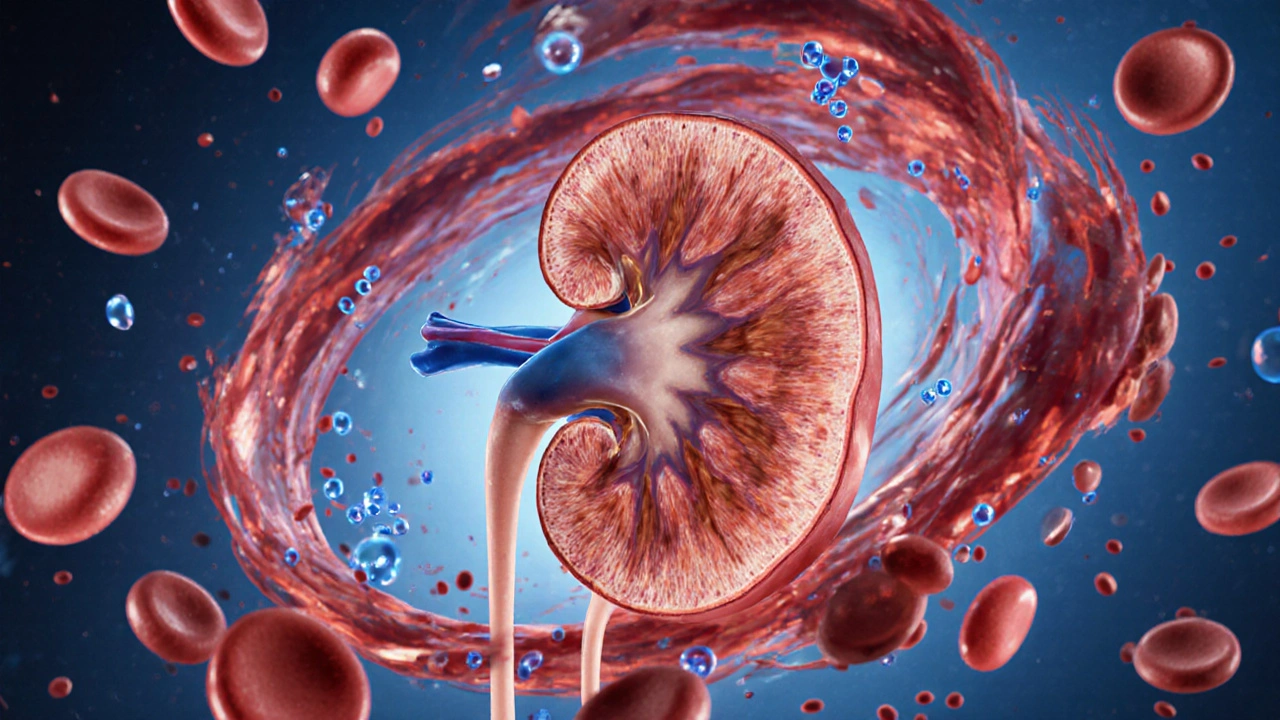
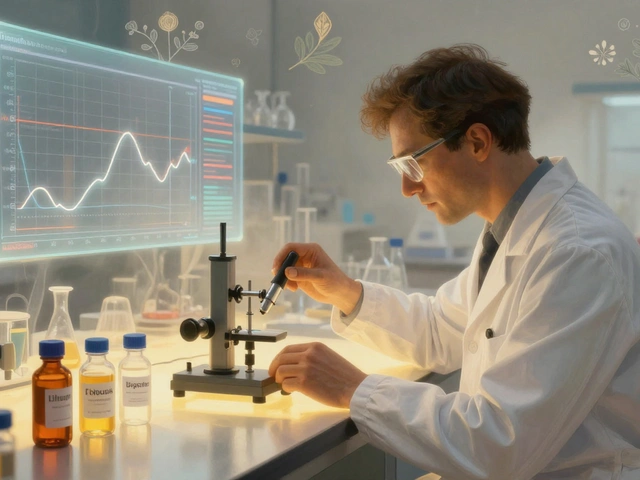
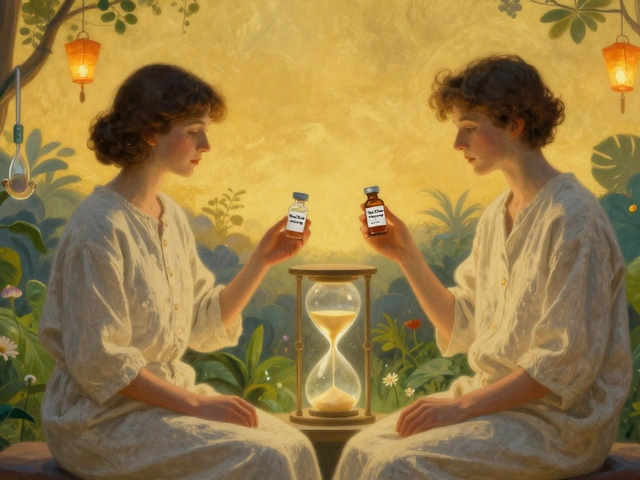



Comments
Sumit(Sirin) Vadaviya
9 October 2025Thank you for assembling such a comprehensive overview of anemia’s impact on renal health. Your explanation of erythropoietin production is clear, and the inclusion of a practical calculator adds real‑world value. 😊 The interplay between iron deficiency and functional erythropoietin resistance is often underrated, and your piece shines a light on that hidden hurdle.
lindsey tran
9 October 2025Wow, this article is like a lifesaver! I love how you break down the scary science into bite‑size nuggets. It totally definetly made my brain go "whoa!" when you talked about the kidneys being oxygen‑hungry. Keep dropping these gold nuggets, cause we need them! 💪
Krishna Sirdar
9 October 2025Reading this made me reflect on the delicate balance our bodies maintain. When the kidneys struggle, they send a silent SOS by reducing erythropoietin, and the blood answers with lower hemoglobin. It’s a loop that reminds us how interconnected our systems truly are. By addressing iron, B12, or folate, we can often break that cycle and give the kidneys a breath of fresh air. Simple dietary tweaks, like adding citrus to iron‑rich meals, become acts of compassion toward our own organs.
becca skyy
9 October 2025Really solid breakdown here. It’s fascinating how cultural diets can either help or hurt iron absorption. For anyone trying to keep potassium low, swapping spinach for lean beef makes sense while still getting that iron boost.
Theo Roussel
9 October 2025From a nephrology standpoint, the pathophysiological cascade described aligns with current consensus guidelines. The integrative approach-combining hematologic indices (Hb, ferritin, TSAT) with CKD staging-optimizes therapeutic decision‑making. Moreover, the recommendations for IV iron in inflammatory states reflect evidence‑based practice to circumvent functional iron deficiency.
Erick Masese
9 October 2025While the article is thorough, one must remember that not every patient tolerates high doses of oral ferrous sulfate. Simpler regimens-like low‑dose elemental iron taken with vitamin C-are often more sustainable. It’s a small nuance, but essential for real‑world adherence.
Matthew Charlton
9 October 2025Great point about tailoring supplements to individual CKD stages. It’s encouraging to see practical guidance that doesn’t just stay in the textbook realm. Keep sharing this kind of actionable info; it really helps folks stay on track with their health goals.
Pamela may
10 October 2025I'm really impressed by the depth of this write‑up, it covers so many aspects that many other articles miss. First of all, the way you linked the oxygen delivery issue to nephrons really resonated with me because I was always wondering why low Hb seemed to speed up the decline. Then you went on to explain how iron deficiency can actually blunt the response to EPO, which is a nuanced point that many clinicians overlook. Also, the table with specific nutrient values is super handy; I can actually grab that and make a quick grocery list. I appreciate the mention of vitamin C pairing – that's something I've tried but didn't fully understand why it mattered until now. The caution about potassium and phosphorus is also crucial, especially for those on a renal diet who might think "more iron = more greens" without considering the potassium load. Your suggestion to space iron from phosphate binders by two hours is a practical tip that will definitely help avoid suboptimal absorption. The long‑term monitoring checklist is another great addition; having a concrete list of labs and vitals to follow gives patients a clear roadmap. Lastly, the red‑flag symptoms section is a lifesaver – it's easy to dismiss fatigue, but knowing when it's a sign of something more serious can prompt timely medical attention. Overall, this piece feels like a roadmap rather than just a summary, and I can see it being referenced by both patients and healthcare providers alike. Thanks for putting together such a comprehensive guide – it's exactly the kind of resource we need in the CKD community.
tierra hopkins
10 October 2025Nice work, this is solid info. Just a heads up: make sure to keep the language super clear for folks who aren’t med‑savvy.
Ryan Walsh
10 October 2025Totally agree, clarity is key. Maybe add a quick summary at the end for quick reference?
Kiersten Denton
10 October 2025Sounds helpful.
Karl Norton
10 October 2025Honestly, the article feels a bit fluffy. You gloss over the fact that many CKD patients can't even absorb oral iron properly, and you don't challenge the pharmaceutical bias toward IV formulations. A more critical lens would serve readers better.
Ashley Leonard
10 October 2025I appreciate the thoroughness, but could you clarify the exact dosage ranges for folate supplementation post‑dialysis? Some of the numbers seem a bit vague.
Ramanathan Valliyappa
10 October 2025The article lacks precise citations; improve source transparency.
lucy kindseth
10 October 2025Great guide! If you’re looking for a quick tip: a daily glass of orange juice with your iron‑rich breakfast can boost absorption dramatically. Keep it up.
Nymia Jones
10 October 2025It is imperative to recognize that the mainstream medical narrative surrounding iron supplementation is part of a larger, orchestrated agenda designed to profit from chronic disease management. The reliance on intravenous iron, in particular, serves as a conduit for pharmaceutical conglomerates to embed themselves further into the therapeutic regimen of kidney patients, thereby ensuring a perpetual market for their products. One must question why oral formulations, which are more accessible and less invasive, are consistently relegated to secondary status despite ample evidence of their efficacy when paired with appropriate dietary strategies. This selective emphasis is not coincidental; it is a calculated maneuver that consolidates control over patient care and diverts attention from holistic, nutrition‑centric interventions that could otherwise diminish the need for ongoing pharmacotherapy.
Karen McCormack
10 October 2025Ah, the symphony of blood and kidneys-an intricate duet where iron acts as the silent conductor, guiding the rhythmic pulse of life. When the melody falters, the organs waltz into discord, yet with the right nutritional overture, harmony can be restored. Such a poetic dance of science and sustenance.